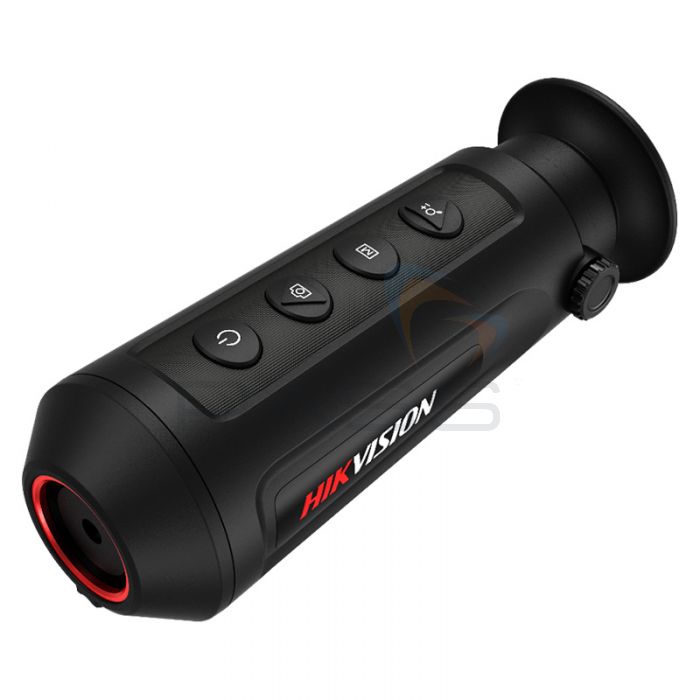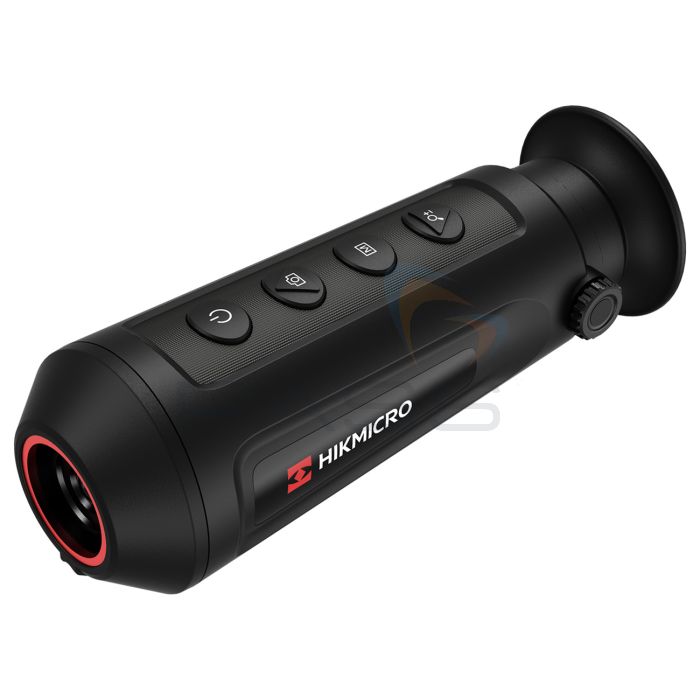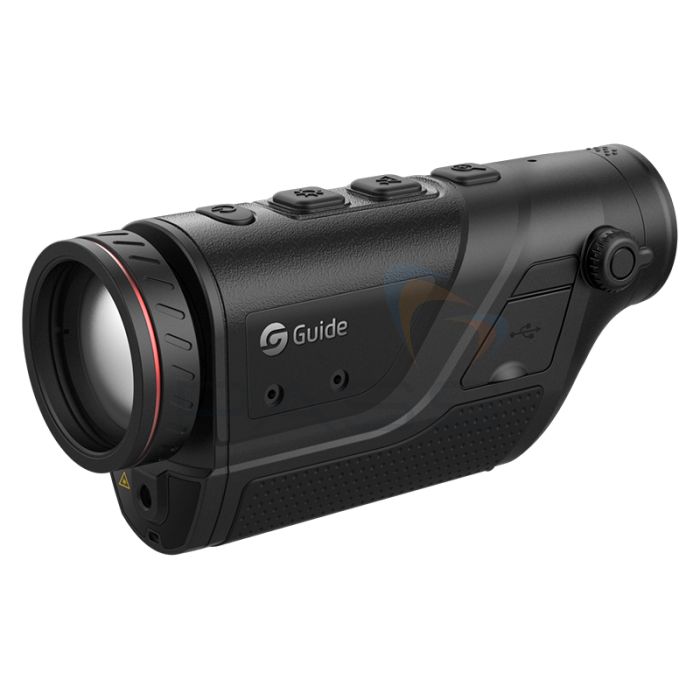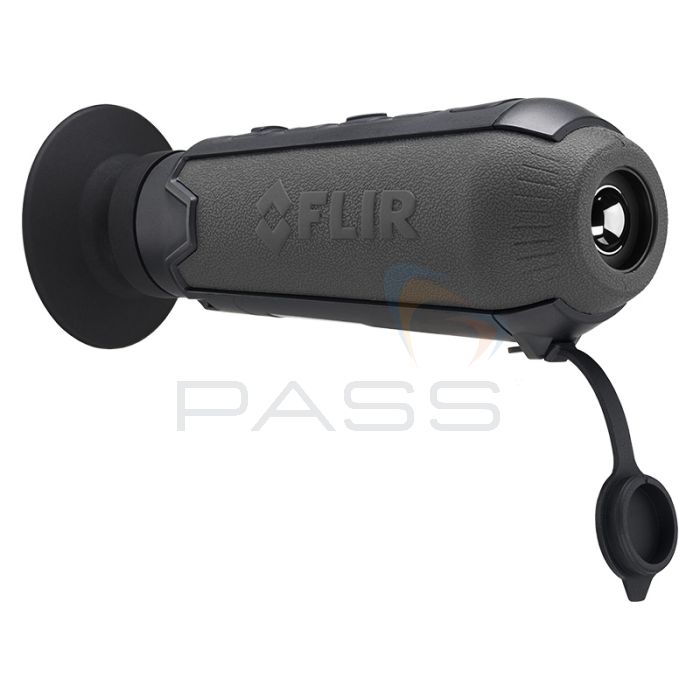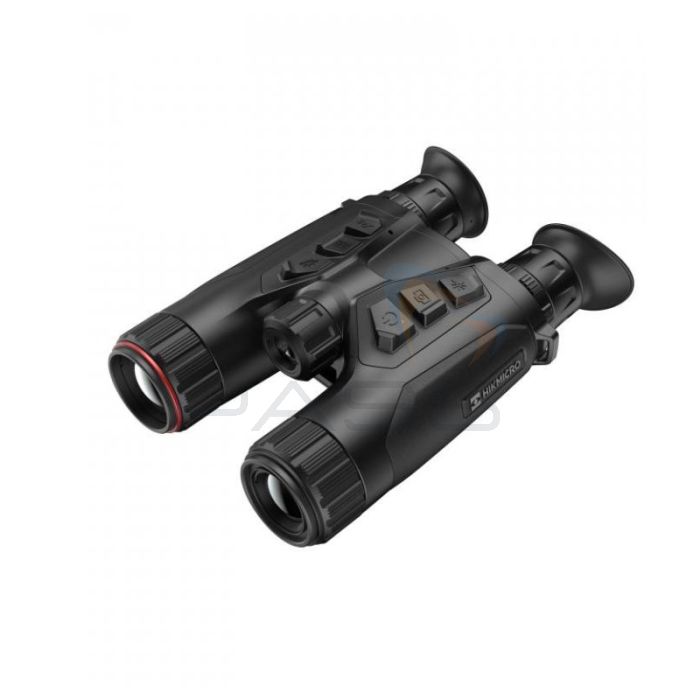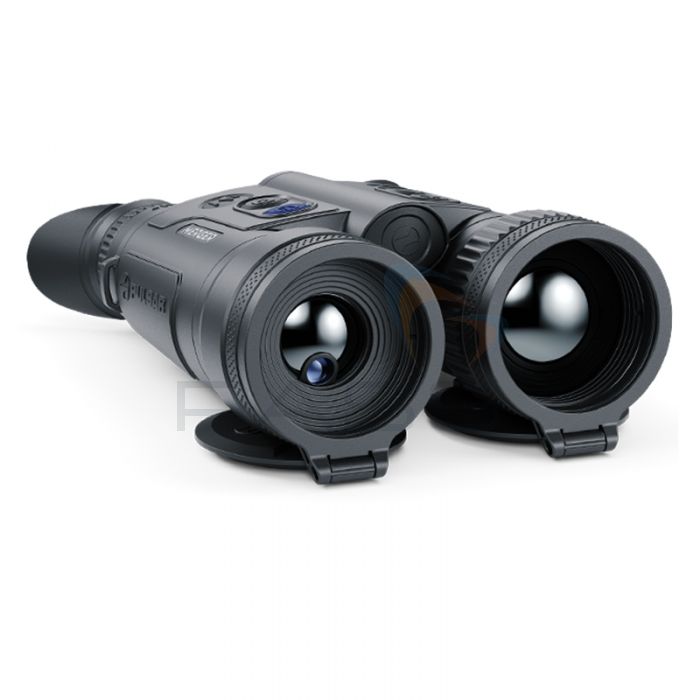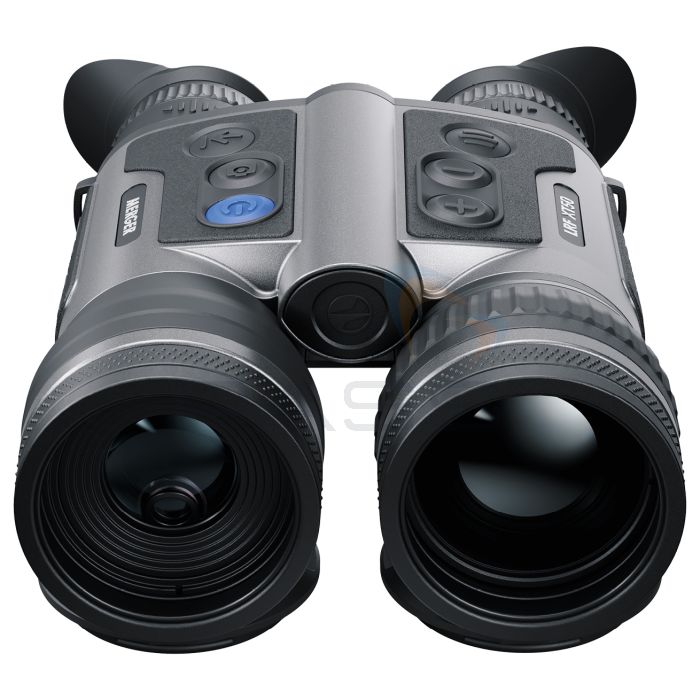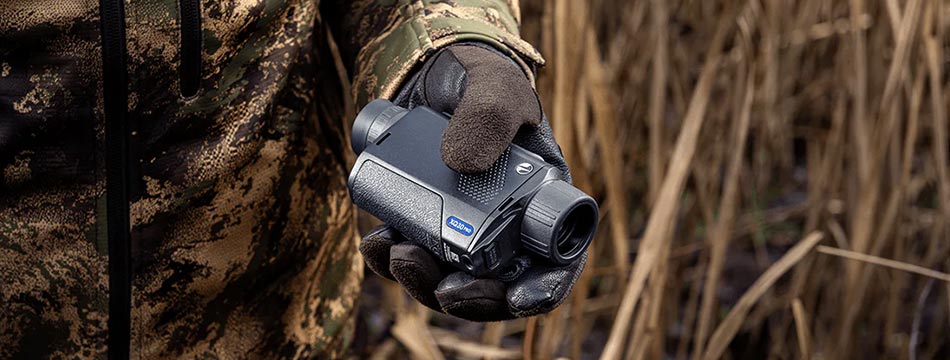
The answer to the question above is simple: the best thermal monocular or thermal binocular to buy is the one that’s best for you. That’s because, like thermal cameras, there is no such thing as the “best” IR monocular/binocular. Instead, there are models that meet all, some, or none of your requirements. Highlighting key specifications and criteria, this guide will help you choose the infrared-imaging monocular/binocular that’s right for you! [1]
Quick Links
- Do you need a thermal monocular/binocular or thermal camera?
- How Much Do You Want to Spend?
- Thermal Monocular vs Thermal Binocular
- Which Brand Do You Favour?
- Choosing a Thermal Resolution
- Selecting Thermal Sensitivity
- What to Know About Refresh Rate
- Understanding Detection Distance
- How to Choose the Correct Lens for Your Application
- The Importance of Durability
- Additional Features
- Popular Thermal Imaging Monoculars
- Popular Thermal Imaging Binoculars
- Further Information
Do you need a thermal monocular/binocular or a thermal camera?
This may seem like a ridiculous question. Nevertheless, it’s important to realise that thermal monoculars and binoculars are primarily intended for ecological, conservation, population control (hunting), and search and rescue applications.
Those searching for an IR tool to help with troubleshooting, diagnostics, maintenance inspections, or energy efficiency surveys may be better served by a thermal camera, also available through PASS/ tester.co.uk. If this sounds like you, please click to view our comprehensive selection of thermal imaging cameras or consult our Thermal Camera Buying Guide.
How much do you want to spend?
We appreciate that budgets vary. Still, we don’t believe you have to compromise functionality or quality to accommodate your funds. That’s why we’re proud to offer an array of thermal monoculars/binoculars at a range of price points.
When assessing thermal imaging binoculars and monoculars, always bear your budget in mind.
Thermal Monocular vs Thermal Binocular
Thermal monoculars and thermal binoculars both offer advantages. Whether you opt for an infrared-imaging monocular or binocular will depend on your application and budget. [2]
Thermal Monocular
Thermal monoculars are, generally, price-attractive, ergonomic, and lightweight. Providing thermal viewing through a single lens, monoculars tend to offer a narrower field of view, making them perfect for quick target observation. Their slimline, lightweight design ensures they are both easy to transport and use. Hence, IR monoculars are perfect for situations in which portability and discreet observation are key. As such, they are ideal for security patrols, hiking, and brief wildlife observation.
| Feature | Thermal Monocular | Thermal Binoculars |
| Field of View | Narrow, perfect for quick target observation | Wider, ideal for observing vast scenes and tracking moving subjects over a prolonged period of time |
| Depth Perception | No 3D depth perception | Stereoscopic (3D) vision provides depth perception for accurate distance measurement |
| Portability | Slimline, lightweight and portable | Larger and heavier, less portable |
| Comfort | Can cause eye strain over time | Two eyepieces enhance user comfort and reduce eye strain |
| Price | More affordable | Generally more expensive |
| Ideal for | Quick scans during security patrols, hiking, and brief wildlife observation | Precise, long-term observation, and accurate distance judgment make thermal binoculars suitable for continuous wildlife observation, security surveillance, and search and rescue missions.[3] |
Thermal Binoculars
By employing dual-lens imaging through two eyepieces, IR-imaging binoculars provide stereoscopic (3D) vision. As a result, they offer better depth perception, making it easier to judge distances and target locations, and a wider field of view, which is useful when observing vast scenes and/or tracking moving subjects. Furthermore, observation through two eyepieces enhances user comfort and reduces strain, making infrared binoculars an ideal choice for extended periods of use. Thermal binoculars may not be as lightweight, ergonomic, or economical as IR monoculars; however, they do offer more comprehensive thermal imaging and are perfect for continuous wildlife monitoring, security surveillance, and search and rescue missions.
Which Brand Do You Favour?
Don’t worry, you don’t have to have an answer to this question. At PASS/tester.co.uk, we stock an eclectic selection of infrared-imaging monoculars and thermal binoculars by leading brands such as Conotech, FLIR, Guide, Hikmicro, Pixfra, and Pulsar. All these brands have merits. Nonetheless, if you do favour a particular manufacturer, this can be an easy way of narrowing down your options.
It is important to note that all the aforementioned brands provide thermal monoculars, but only a few, Guide, Hikmicro and Pulsar, also specialise in IR binoculars.
Choosing a Thermal Resolution
Thermal or infrared/IR resolution refers to the number of pixels in a thermograph (thermal image). The greater the thermal resolution, the more pixels, the sharper the image.
For example:
A thermal imager with an IR resolution of 640 x 480px will capture images composed of 307 200 pixels.
Thermal Monocular/Binoculars with an IR Res Between 400 x 300px and 640 x 512px
However, thermographs captured using a model with an IR resolution of 320 x 240px will be composed of 76 800 pixels.
Thermal Monocular/Binoculars with an IR Res Under 400 x 300px
The thermal picture taken with the higher resolution monocular/binocular will be sharper, allowing you to identify targets easily and with greater certainty.
When selecting a thermal monocular or binocular for ecology, conservation, security, or search and rescue applications, it’s advised that you opt for an imager with the highest thermal resolution your budget allows. Clear, sharp thermal imaging will make it easier and quicker to identify and track subjects amongst dense or busy backdrops, e.g. forests or fields.
Thermal Monoculars with an IR Res Over 1024 x 768px
Advanced Image Processing
Many thermal monoculars and binoculars include algorithms designed to enhance the clarity, detail, and contrast of thermographs. If your budget does not stretch to a high-resolution model, selecting a monocular or binocular with an image enhancement algorithm is an effective compromise.
Most manufacturers offer models with advanced image processing, but not all brands refer to this feature using the same terminology. Look for monoculars/binoculars that list image boost, image enhancement, image smoothing, or digital detail enhancement amongst their features.
High-resolution, Durable Display
To get the most out of your thermal monocular/binocular, select a model with a display resolution that matches (or exceeds) the IR resolution. This will ensure all the clarity, contrast, and detail captured by the thermal detector is translated to the screen.
When assessing monocular/binocular displays, you should also consider their resilience. Screens must be able to withstand the demands of outdoor environments. Paying attention to operating temperatures and additional features such as frost-resistance will help determine whether the display is suitable for the challenges of your work environment.
Selecting Thermal Sensitivity
Thermal sensitivity refers to the smallest temperature difference that thermal binoculars or monoculars can detect and display. It is measured in millikelvins (mK) and often listed as Noise Equivalent Temperature Difference (NETD). The lower the NETD/ millikelvin value, the better the thermal sensitivity. This is because the imager can detect smaller temperature differences. As a result, a thermal monocular with a 20mk NETD will capture crisper, sharper images than a 50mk thermal monocular because it is sensitive to subtler temperature differences between or across objects.
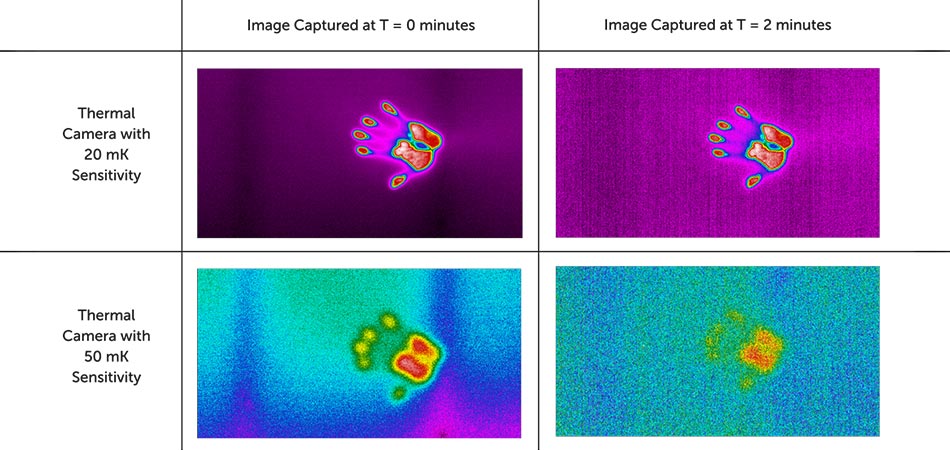
Thermal imagers with high IR sensitivity are perfect for environments with low thermal contrast, as their ability to detect slight temperature differences means they can capture detailed images despite rain, fog, and high atmospheric humidity. This makes them ideal for outdoor ecology, conservation, security, and search and rescue operations. As such, we suggest investing in an IR monocular or binocular with as high a sensitivity (that’s a low NETD/mk value) as your budget will allow.
What to Know About Refresh Rate
Smooth thermal imaging is essential when tracking a moving target. Most ecological, conservation, security, and search and rescue tasks involve monitoring both stationary and non-stationary subjects. As such, selecting a thermal monocular or binocular with a fast frame/refresh rate is essential. Most manufacturers know their thermal binoculars/monoculars will be used to follow moving targets, so equip them with a fast frame rate.
Understanding Detection Distance
Detection range is the maximum distance at which the thermal monocular/binocular can identify heat signatures. Generally, the greater the detection distance, the more expensive the imager. Still, depending on your application, you may not require a long detection range, allowing you to conserve your budget. Consider the greatest distance at which you need to identify heat signatures and select a model accordingly.
At PASS/tester.co.uk, we offer thermal monoculars and thermal binoculars with a range of detection distances:
What is a Rangefinder?
Some models may list a rangefinder or laser rangefinder in addition to a detection distance. Thermal monoculars/binoculars with a rangefinder can calculate the distance to a target and are ideal for people who need to know how far away objects are located.
Be aware that the laser rangefinder may not cover the thermal binocular’s/monocular’s entire detection distance. For instance, a rangefinder may be able to measure the distance to targets that are up to 1000m away, even though the monocular’s/binocular’s maximum detection distance is 2000m.
Thermal Monoculars and Binoculars with Laser Rangefinder
How to Choose the Correct Lens for Your Application
When assessing thermal monoculars and binoculars on their lenses, always consider your application. For example, if you need to scan an expansive area, a large lens isn’t necessarily a better lens. This is because the bigger the lens, the narrower the field of view (FOV); therefore, the more time-consuming and difficult it is to survey a broad scene. A more effective use of your funds is to invest in a model with a smaller lens and wider FOV, as it will enable you to observe vast areas easily and efficiently.
Having said that, imagers with a small lens and, accordingly, a wide FOV, are not well equipped for detecting heat signatures at long distances. If you need to spot targets that are far away, it might be advisable to sacrifice the width of your FOV to gain focal length. Models with a narrow field of view (and therefore a large lens) render distant objects in great clarity, effectively bringing them closer.
Thermal monoculars and binoculars with a mid-size lens offer a compromise between field-of-view and focal length. These models will not offer a field-of-view as wide as imagers with a small lens, though they will provide a longer focal length. Similarly, a monocular/binocular with a mid-size lens will have a shorter focal length than imagers with a large lens, nevertheless, the camera’s FOV will be broader.
In addition to the field of view and focal length, it is important to evaluate the quality of the lens. Experts suggest choosing a monocular/binocular fitted with a lens featuring a high refractive index or a multi-coated lens, as these will deliver a clearer, sharper viewing experience.
The Importance of Durability
Most thermal monoculars and thermal binoculars are used for outdoor applications. This means durability and weather-resistance are important: the more resistant the imager, the better its longevity. Consequently, it’s advisable to invest in the most rugged unit that your budget allows.
When assessing durability and weather-resistance, there are several factors you should consider:
- Materials: it’s vital that your chosen thermal monocular/binocular can withstand the rigours of outdoor locations; look for a model made from high-quality plastics or metals, as these imagers tend to be resilient and resistant to wear and tear.
- Ingress Protection: IP-rating offers a good indication of the monocular’s/binocular’s weather-resistance. Monoculars/binoculars must be at least water-resistant, if not waterproof. Look for models with an ingress protection of IPX4 or greater.
- Operating Temperatures: monoculars/binoculars with wide operating temperatures will deliver consistent, high-quality thermal imaging regardless of heat extremes. This specification is important to consider if you will be using your imager in very cold or hot conditions.
- Shock/drop-proof: no one is immune to slips or drops; therefore, ensuring your infrared binocular/monocular can withstand sudden contact with unforgiving ground is essential. Some models may offer shockproof housing, while others might list a drop-proof rating, e.g. drop tested from 2m, indicating the height at which the imager can be dropped without sustaining damage.
Additional Features
Many thermal monoculars and binoculars offer additional features intended to improve the ease, efficiency, and precision of operation. When choosing an IR binocular/monocular, consider whether you would benefit from any of the following.
Video Recording
Image and video capture allow you to record key moments. Thermal-imaging binoculars/monoculars with this function are ideal if you need to document findings, evidence progress, or simply share footage with fellow enthusiasts. When choosing an infrared monocular/binocular with a video recording function, make sure it also includes memory storage large enough to accommodate the quantity of media you anticipate capturing.
Audio Recording
Most infrared-imaging monoculars/binoculars with image and video capture only save thermographs and thermal footage. Yet, some models will record audio as well as video. If video recording with audio is something you require, consider these thermal monocular/binoculars.
Picture-in-Picture (PiP)
Picture-in-Picture mode allows you to magnify a specific area of the scene without losing the overall field of view. This is ideal for situations where you need to focus on a target without compromising your situational awareness.
Hotspot Tracking
As implied, this function allows you to track a hotspot within the scene. It is perfect for conservation, ecology, and security applications, where you may need to follow an animal or human subject.
Colour Palettes
Interchangeable colour palettes allow you to highlight specific aspects of the scene; ergo, you can adapt your thermal imager for specific conditions or applications. For example:
- White Hot, Black Hot, and Red Hot thermal colour palettes are ideal for object detection
- Rainbow and Ultramarine improve recognition and identification
- Red Monochrome, Sepia, and Violet are suitable for long observation at night
Zoom/Magnification
If you need to spot objects at a distance or monitor moving targets, a thermal monocular/binocular with a zoom function will allow you to magnify details, effectively bringing them closer. Many IR monoculars/binoculars offer a zoom/magnification between 2x and 8x, although some exceed this, and others provide a continuous zoom function, allowing you to adjust the magnification as necessary. When selecting an infrared-imaging monocular/binocular with an appropriate zoom, consider the distance from which you will be viewing subjects and the precision with which you need to make adjustments.
GPS
GPS tracking is helpful if you need to track your movement or locations.
Wi-Fi Connectivity
Many thermal monocular/binocular brands support their instruments with a dedicated free imaging app:
- Conotech App
- Guide TargetIR
- Hikmicro Sight
- Pixfra Outdoor
- Pulsar Stream Vision 2
Models with built-in Wi-Fi connectivity can connect to the corresponding brand’s app, allowing users to save, share, and stream footage, as well as operate the infrared monocular/binocular remotely via their smartphone. Wi-Fi connectivity is ideal for teams that need to share/stream footage to work collaboratively.
Popular Thermal Imaging Monoculars
Popular Thermal Imaging Binoculars
Further Information
For more help or advice about choosing the best thermal monocular or thermal binocular for your needs, please contact our Sales team on 01642 931329 or via our online form.
To learn more about the applications of infrared monoculars, please consult the following case studies and guides.
- Best Thermal Camera for Ecologists & Wildlife Conservation in 2025
- Guide Develops TK612 Thermal Camera Specifically for Bat Surveys
- How Thermal Imaging is Helping to Save a Species
In the meantime, you can browse our extensive range of IR monoculars and binoculars at tester.co.uk
Browse Thermal Monoculars and Binoculars
Footnotes
[1] Information for this guide was primarily gathered from the following sources:
- BinocularBase, Top 5 Must-Have Thermal Monocular Features to Consider Before Buying, last accessed 14 May 2025.
- Mileseey Optics, Top 8 things you need to know about a thermal imaging monocular, last accessed 14 May 2025.
- Shooting Supplies, The Ultimate Guide to Thermal & Night Vision Monoculars, last accessed 14 May 2025.
Additional references in subsequent footnotes.
[2] Information for this section was gathered from the following sources:
- Guide Outdoor, Thermal Monocular vs. Binocular: Which One is Right for You?, last accessed 14 May 2025.
- Nature’s Optics, Thermal Monocular vs. Binocular, last accessed 14 May 2025.
- Wolf Dash, Thermal Monocular vs Thermal Binoculars: Which One Should You Choose?, last accessed 14 May 2025.
[3] Based on the table from Wolf Dash, Thermal Monocular vs Thermal Binoculars: Which One Should You Choose?


